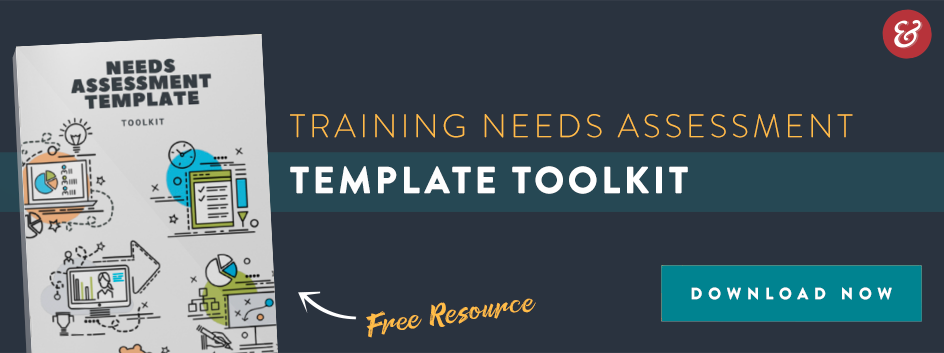Storytelling Series: An Instructional Strategy for Hundreds of Years
Using stories to deliver compliance training, ethics training, and code of conduct training is not new. In fact, people have been doing it for hundreds of years.
The previous blog in this series talked about how using storytelling in your design produces instruction that is sticky. That’s because the story framework itself is a memory device. It creates a construct that makes it easy for leaners to recall or remember what they learned.
Not only can you use storytelling as a training tactic, but you can also use it as an instructional strategy. In learning and development, storytelling opens the door to different categories of training the same way that fiction opens the door to different genres in literature.
Dr. Seuss stories and ethics training
Let’s start with what might be familiar to many of us: Dr. Seuss. His books have inspired readers to make our community a better place from a range of perspectives, including those closely aligned with 21st century workplace training topics, like environmentalism and tolerance (except those no longer being published due to imagery) .
The Lorax and corporate responsibility and sustainability training
In this story, the bad guy sources the forest’s trees for his business, and the good guy, the Lorax, tells him to stop. He doesn’t and ends up destroying the environment. The Lorax’s takeaway is that it’s up to everyone to take care of the communities in which we live, including the companies for which we work. Corporate responsibility and sustainability training sends a similar message that employees should be good stewards of the communities in which we work.
The Sneetches and anti-discrimination training
This story that pits the star-bellied against the plain-bellied Sneetches is all about tolerance and accepting differences. Similar to present-day diversity training, this Sneetch scenario literally illustrates why readers should avoid making assumptions about others based on their appearance.
If you like your anti-harassment and discrimination training illustrated, check out this work we did for Minnesota Coalition Against Sexual Assault (MNCASA).
Horton Hears a Who! and Diversity & Inclusivity Training
Horton Hears a Who! tells the story of an elephant who strives to save the seemingly insignificant community of Whoville from a jungle of bullies. The story’s central theme, “a person’s a person, no matter how small,” teaches readers about equality. Essentially, this is the same message today’s workplace diversity and inclusion training sends.
Meanwhile, Horton’s efforts to protect the Whos deal with standing up for what you believe in. This theme rings loud and clear throughout workplace ethics courses that emphasize reporting concerns or include a whistleblowing component.
Here’s an example of some of the social justice-related training we’ve created for clients.

Jane Austen novels are the original Code of Conduct Training
When 17th and 18th century writers wanted to talk about an entire code of behavior in a storytelling context, they cranked out novels. Called conduct books, these dealt with the conduct of one’s life in an overarching, ethical sense. Primarily white, middle class men penned these to guide other men “in the instruction of” their wives and daughters. A well-known example of this is the Reverend James Fordyce’s Sermons to Young Women. This 1777 best seller instructs women to be “dutiful, submissive, and modest.”
Several decades later Jane Austen came along and put a new spin on the conduct novel with Pride and Prejudice. Not unlike the conduct novels preceding it, this “comedy of manners” addressed class and marriage issues. However, Austen’s narrative empowered women to make practical decisions about their futures because they lacked the same opportunities as men. Three years later Austin’s Emma reimagined the conduct book by following the education of its protagonist, Emma Woodhouse, which came to be known as a Bildungsroman, “a novel of education” or “a novel of formation.”
Little Red Riding Hood is Compliance Training
If you’ve heard the story of Little Red Riding Hood, you know the takeaway for kids is to obey you’re their parents and be careful who they trust. Perhaps originating from Aesop’s fable, “The Wolf in Sheep’s Clothing,” this folktale was meant to teach kids a lesson. Today, compliance training is the format we use to teach working adults a lesson. Similar to Little Red Riding Hood, the takeaway of today’s compliance training can be summed up as “obey company policies.” Regarding anti-bribery and corruption training, the takeaway tacked on to that is “be careful who you trust.”
Just as folklore’s cautionary tales warned its listeners of danger and urged them to follow rules for their own safety, compliance training warns learners of danger and urges employees to follow rules for their own protection. For some examples of these, take a look at the OSHA emergency training and HIPAA training we’ve done for clients.
Today the cautionary tales—and compliance training (EM DASH)takes several forms, including that of public service announcement (PSA). We’ve all seen these modern-day cautionary tales dangers in modern life, like “This is your brain on drugs” by a Partnership for a Drug-Free America.
The PSA approach in particular is a great way to leverage storytelling to advocate for conformity, warn audiences of danger, and direct them toward avoidance. These work well for compliance training because their objective is to convey how failure to apply principles or procedures causes problems. This works great for anti-fraud training, anti-money laundering, and anti-bribery and corruption training.
(If you’re feeling meta and want to read cautionary tales about compliance training, check out these blog posts spotlighting the importance of good compliance training in general and anti-corruption training in particular.)
Othello is 20th Century Drivers Ed
Similar to cautionary folk tales, morality plays used allegorical characters to teach audiences a moral lesson. Morality plays, however, featured human characters rather than talking animals.
In these, the protagonist represents society, and the supporting characters represent good and evil. A great example of this is Shakespeare’s Othello. The character Othello, like society, is a balance of all things great and weak. Desdemona signifies kindness and faithfulness, while Iago is pure evil.
Over time, morality plays became less entertaining and more educational. This made them unpopular, giving didactic literature a bad name, which is why we file morality plays under storytelling approaches to avoid.
More recent examples of this are the drivers ed “scare films” you may have seen, depending on when you learned to drive. Back in the twentieth century, driver safety classes showed graphic educational films designed to scare young people into driving safely. These low budget scare films paired bad acting with disturbing images of disfigured bodies.
These failed to hit the mark for a number of reasons but mainly because most learners walked away thinking what they saw in those films “could never happen to me,” or “I know people who do that, and they are fine.”
Scare tactics tend to backfire because they teach the wrong content. For example, learning about the adverse consequences of bad driving doesn’t produce good driving, it produces an awareness of the consequences. Clarifying values that influence behavior associated with good driving doesn’t teach you how to drive. However, learning and practicing skills required to operate a vehicle will teach you how to drive. That’s why today’s drivers education training emphasizes skill-development, so that learners have the skills and abilities to respond to driving hazards and avoid potentially dangerous situations.
The end
Shakespeare, Jane Austen, and Dr. Seuss recognized storytelling as a powerful tool for encouraging behavior change, and that the narrative structure itself would make their stories “stick.” If they could use stories to deliver compliance and ethics training, so can you.

https://www.sup.org/books/title/?id=310
https://www.litencyc.com/php/stopics.php?rec=true&UID=216
Newton, Sarah E. (1994). Learning to Behave: A Guide to American Conduct Books Before 1900. Greenwood Press.
https://www.bl.uk/works/pride-and-prejudice
https://en.wikipedia.org/wiki/Cautionary_tale
https://en.wikipedia.org/wiki/This_Is_Your_Brain_on_Drugs
https://en.wikipedia.org/wiki/Didacticism
https://www.historicvehicle.org/top-five-drivers-ed-scare-films/
Continue reading

Dashe joins ttcInnovations
Learn More
Embracing the Future: Early Adopters of Generative AI for Learning
Learn More
Four Areas To Consider When Designing Accessible Training
Learn MoreCommitted to
finding solutions
